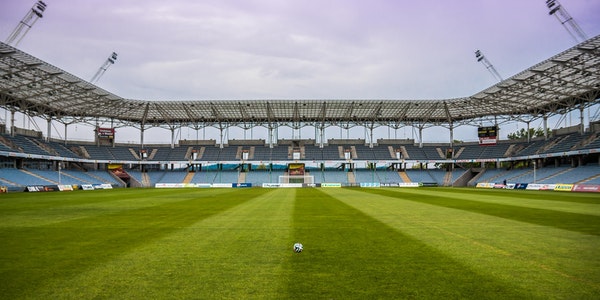(5) Financial Viability and Return on Investment (ROI):
Payback Period:
ROI Calculation: Despite higher initial costs, LED lighting typically offers a payback period of 1-3 years through energy savings and reduced maintenance expenses.
Example: By year three, a venue could potentially recover its initial investment in LED lighting and start realizing net savings over the lifespan of the fixtures.
(6) Quality of Lighting and User Experience:
Enhanced Visibility and Ambiance:
Impact on Experience: LED lighting improves visibility, reduces glare, and enhances color rendering, providing a better experience for attendees and performers.
Example: Even venues with smaller budgets can enhance their event quality and appeal by upgrading to LED lighting, ensuring optimal conditions for various activities and events.
For venues with smaller budgets, adopting LED lighting offers compelling financial and operational benefits despite initial investment costs. The significant reductions in energy consumption, long-term maintenance savings, environmental sustainability, and enhanced user experience justify the upfront expenses. By conducting a thorough cost-benefit analysis and considering factors such as energy savings, maintenance reductions, environmental impact, and improved lighting quality, venues can make informed decisions to transition to LED lighting solutions, thereby optimizing operational efficiency and achieving long-term financial savings.
I. Technological Innovations and Future Trends
Advanced Control Systems:
Smart lighting and automation
Advantages and Implementation Strategies
- Energy Efficiency and Cost Savings:
Automated Controls:
Detail: Smart lighting systems use sensors, timers, and programmable controls to optimize energy use based on occupancy and natural light levels.
Impact: This reduces energy consumption by ensuring lights are only on when needed, leading to significant cost savings on electricity bills.
Example: Venues can integrate occupancy sensors in dressing rooms, corridors, and restrooms to automatically turn lights on and off as people enter and leave, minimizing wastage.
- Enhanced User Experience:
Customizable Settings:
Detail: Smart lighting allows for customizable settings such as brightness levels, color temperature, and mood lighting for different events and activities.
Impact: This enhances the overall ambiance and experience for attendees, performers, and staff, creating dynamic and engaging environments.
Example: During concerts or presentations, smart lighting systems can synchronize with audio cues to create immersive experiences that captivate audiences.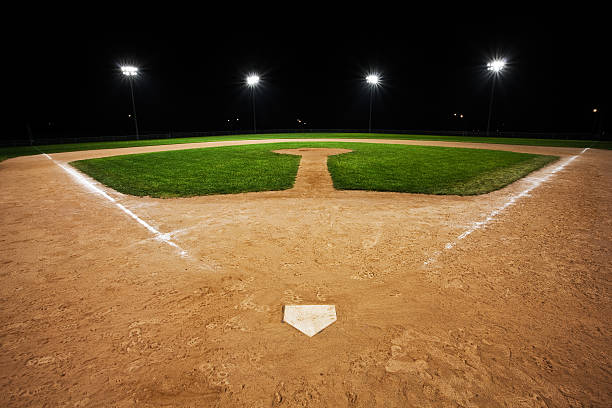
- Remote Monitoring and Management:
Centralized Control:
Detail: Smart lighting systems can be monitored and managed remotely through centralized platforms, enabling real-time adjustments and troubleshooting.
Impact: Facility managers can optimize lighting schedules, detect faults, and ensure consistent performance across different areas of the venue.
Example: A venue manager can adjust lighting levels and settings from a mobile app, ensuring optimal conditions for events and reducing operational downtime.
- Integration with Other Smart Technologies:
IoT Connectivity:
Detail: Smart lighting systems can integrate with other IoT devices and technologies, such as HVAC systems and security systems, for seamless operation.
Impact: This interoperability enhances overall building management efficiency and enables holistic control over facility operations.
Example: By integrating lighting with occupancy data and building automation systems, venues can achieve greater energy savings and operational efficiencies.
- Data Analytics and Insights:
Usage Patterns and Optimization:
Detail: Smart lighting systems collect data on usage patterns, occupancy trends, and energy consumption, providing valuable insights for performance optimization.
Impact: Venue operators can make data-driven decisions to further optimize energy efficiency, enhance user comfort, and reduce operational costs.
Example: Analyzing lighting usage data helps identify areas for improvement and fine-tuning of automation settings to maximize energy savings without compromising user experience.
Smart lighting and automation technologies offer numerous benefits for venue settings, including improved energy efficiency, enhanced user experience, remote management capabilities, integration with other smart systems, and valuable data analytics insights. By leveraging these technologies, venues can achieve significant cost savings, reduce their environmental footprint, and create dynamic and adaptable environments that cater to diverse events and activities. As smart lighting continues to evolve with advancements in IoT and automation, venues have the opportunity to enhance operational efficiency, optimize resource management, and provide superior experiences for stakeholders and visitors alike.
Integration with IoT and AI
Advantages and Synergistic Capabilities
- Enhanced Energy Efficiency:
IoT Sensors and AI Algorithms:
Detail: IoT sensors monitor occupancy, daylight levels, and environmental conditions, while AI algorithms analyze data to optimize lighting schedules and settings.
Impact: This dynamic control minimizes energy wastage by adjusting lighting levels in real-time based on actual usage patterns and ambient light availability.
Example: In a venue, AI can predict occupancy trends based on historical data and adjust lighting accordingly, ensuring optimal illumination while conserving energy during low-usage periods.
- Personalized User Experience:
AI-Driven Personalization:
Detail: AI algorithms analyze user preferences and behavioral patterns to customize lighting experiences based on individual or group needs.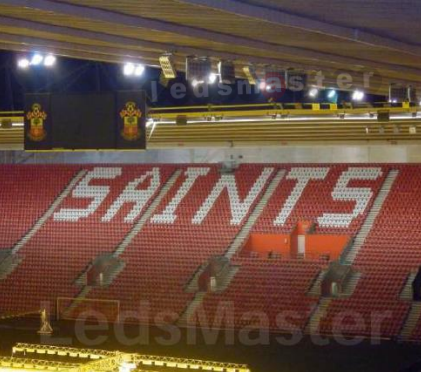
Impact: This enhances user comfort and engagement by tailoring lighting conditions to match specific activities, events, or user preferences.
Example: Smart lighting systems can adjust color temperature and brightness levels in real-time during conferences, concerts, or sports events, optimizing visual comfort and enhancing overall attendee satisfaction.
- Predictive Maintenance and Fault Detection:
IoT Connectivity for Maintenance:
Detail: IoT-enabled smart lighting systems collect operational data to predict maintenance needs and detect faults before they escalate.
Impact: Proactive maintenance reduces downtime, enhances reliability, and extends the lifespan of lighting fixtures, minimizing disruption to venue operations.
Example: AI algorithms analyze performance metrics and anomaly detection in real-time to notify maintenance teams of potential issues, enabling prompt resolution and operational continuity.
- Integration with Building Management Systems:
Holistic Building Optimization:
Detail: Smart lighting integrates with broader building management systems (BMS) for centralized control and optimization of energy use across multiple systems.
Impact: This interoperability streamlines facility operations, improves resource allocation, and enhances overall building efficiency.
Example: By integrating lighting with HVAC, security, and occupancy management systems, venues achieve comprehensive energy management and operational synergy, maximizing cost savings and sustainability efforts.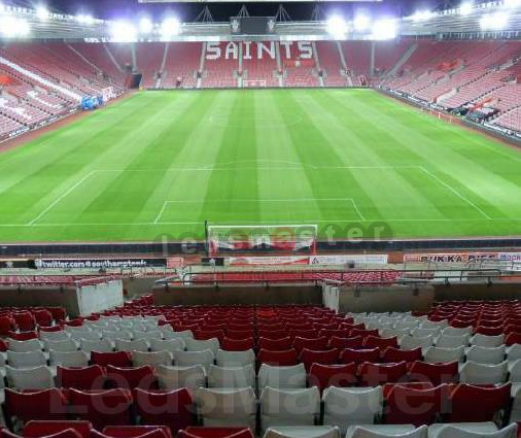
- Continuous Improvement Through Data Analytics:
AI-Driven Insights:
Detail: AI analyzes vast datasets from IoT-connected devices to provide actionable insights for continuous improvement of lighting performance and operational efficiencies.
Impact: Data analytics optimize energy consumption, identify trends, and support strategic decision-making for long-term sustainability and cost management.
Example: By leveraging AI-powered analytics, venue operators can refine lighting strategies, validate energy savings, and justify investments in smart lighting technologies through quantifiable performance metrics.
Integrating smart lighting with IoT and AI technologies revolutionizes venue settings by enhancing energy efficiency, personalizing user experiences, enabling predictive maintenance, optimizing building operations, and harnessing data-driven insights for continuous improvement. As venues embrace interconnected systems and intelligent automation, they unlock new possibilities for sustainability, operational efficiency, and enhanced visitor satisfaction. By leveraging the synergistic capabilities of IoT and AI with smart lighting solutions, venues can achieve transformative benefits that elevate their performance, resilience, and environmental stewardship in an increasingly interconnected world.
Customizable Lighting Solutions:
Personalized lighting for different sports and events
Tailoring Illumination to Enhance Performance and Atmosphere
- Dynamic Lighting Settings:
Sport-Specific Configurations:
Detail: Smart lighting systems allow for customizable presets tailored to specific sports, adjusting brightness, color temperature, and distribution patterns.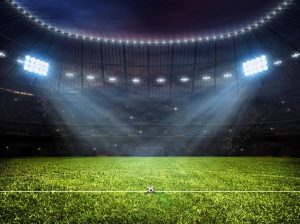
Impact: Optimized lighting conditions improve visibility, reduce glare, and enhance contrast, facilitating better performance and safety for athletes.
Example: For basketball games, lighting can focus on the court area with higher brightness levels, while for ice hockey, lighting can be adjusted to minimize reflections and enhance puck visibility.
- Adaptive Lighting for Events:
Versatile Configurations:
Detail: Smart lighting solutions offer flexibility to adapt to diverse events such as concerts, conferences, and exhibitions, adjusting lighting intensity and color to complement event themes and activities.
Impact: Enhances ambiance and attendee experience by creating immersive environments that align with the mood and purpose of each event.
Example: During a concert, lighting can synchronize with music beats and stage effects, creating dynamic visual displays that captivate the audience and amplify the artist’s performance.
- Color Rendering and Aesthetic Enhancements:
Enhanced Visual Appeal:
Detail: Advanced LED technologies provide high color rendering index (CRI) and RGB color control, enabling vivid color representation and aesthetic enhancements.
Impact: Improves the visual quality of broadcasts, enhances venue aesthetics, and reinforces brand identity during televised events.
Example: LED fixtures can be programmed to display team colors or corporate branding colors during sports games or corporate events, reinforcing visual identity and creating a cohesive atmosphere.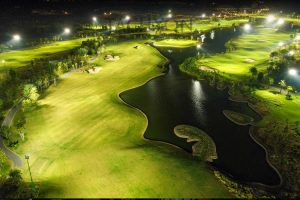
- User-Defined Preferences and Automation:
Personalized Settings:
Detail: Venue operators and event organizers can pre-set lighting scenes and schedules based on user preferences or event requirements through intuitive control interfaces.
Impact: Simplifies event management, ensures consistency in lighting quality, and enables seamless transitions between different segments of events.
Example: A multi-purpose venue can automate lighting changes between a conference setup, a gala dinner, and a live performance, optimizing lighting conditions for each event phase without manual adjustments.
- Integration with Audiovisual Systems:
Synchronized Experiences:
Detail: Integration with AV systems allows lighting to synchronize with audio cues, video content, and interactive displays, enhancing overall event immersion.
Impact: Creates cohesive and engaging experiences that captivate audiences, synchronize with entertainment elements, and heighten emotional engagement.
Example: During a sports event, smart lighting can react to crowd cheers or pivotal moments in the game, intensifying the atmosphere and boosting spectator excitement in real-time.
Personalized lighting solutions for different sports and events leverage smart technologies to optimize performance, enhance ambiance, and elevate attendee experiences in venue settings. By tailoring illumination settings to specific sports requirements, adapting lighting configurations for diverse events, and integrating with audiovisual systems for synchronized experiences, venues can achieve heightened visual impact, operational efficiency, and audience engagement. As smart lighting continues to evolve, its ability to create dynamic and adaptable environments will play a crucial role in shaping memorable experiences across sports arenas, concert halls, conference centers, and beyond.
Adaptive lighting for weather and time of day
Enhancing Efficiency and Visibility Across Changing Conditions
- Weather-Responsive Lighting:
Dynamic Adjustment Based on Weather Conditions:
Detail: Smart lighting systems equipped with weather sensors and AI algorithms automatically adjust lighting intensity and color temperature in response to ambient light levels, weather patterns (e.g., cloudy vs. sunny), and outdoor conditions.
Impact: Ensures optimal visibility and energy efficiency by adapting lighting to changing natural light and weather conditions, reducing glare and maintaining consistent illumination quality.
Example: During overcast conditions, lighting can compensate by increasing brightness to maintain visibility on the field or outdoor venue, ensuring games and events proceed with minimal disruption.
- Time-of-Day Optimization:
Scheduled Lighting Changes:
Detail: Programmable lighting schedules allow venues to adjust brightness levels and color temperatures throughout the day, optimizing illumination for morning, afternoon, and evening events.
Impact: Enhances visual comfort, ambiance, and energy efficiency by aligning lighting settings with natural circadian rhythms and event schedules.
Example: In indoor arenas, lighting can gradually transition from natural daylight simulation during morning practices to warm, ambient lighting for evening performances, creating suitable atmospheres for various activities.
- Energy Efficiency and Cost Savings:
Lighting Control Strategies:
Detail: Adaptive lighting strategies include dimming during daylight hours and using sensors to adjust brightness based on occupancy and activity levels, maximizing energy savings.
Impact: Reduces electricity consumption and operational costs by minimizing unnecessary lighting during daylight hours and optimizing usage during peak demand periods.
Example: Outdoor stadiums can utilize motion sensors and daylight harvesting techniques to dim or turn off unnecessary lights when areas are unoccupied or natural light levels are sufficient, conserving energy without compromising safety or visibility.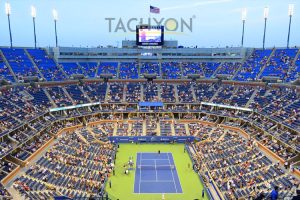
- Integration with Environmental Sensors:
Real-Time Data Integration:
Detail: Integration of environmental sensors (e.g., light sensors, weather stations) with smart lighting systems enables real-time data collection and analysis for responsive lighting adjustments.
Impact: Enhances operational efficiency, sustainability, and user comfort by continuously monitoring and adapting to environmental conditions.
Example: A venue equipped with smart lighting can use temperature and humidity sensors to adjust lighting settings in indoor spaces, ensuring optimal conditions for both comfort and energy efficiency.
- Safety and Visibility Enhancements:
Optimized Lighting for Safety:
Detail: Adaptive lighting strategies prioritize safety by ensuring sufficient illumination levels for pathways, emergency exits, and critical areas based on changing environmental factors.
(To Be Continued)

